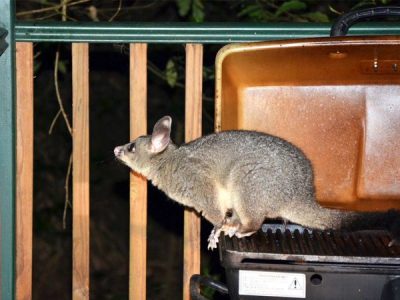A termite management system is a chemical or physical installment designed to protect your entire home against termites.
The best type for your home largely depends on whether your house is built on a concrete slab on the ground, or if it has a raised floor. So let’s have a look at your options for termite protection.
Before we start…
Cure All Pest Control promotes yearly termite inspections. Even with a termite management system, white ants can find their way in by flying, or by other means including poor landscaping decisions. Within weeks, termite can do serious damage, so left unchecked for years, homeowners can be oblivious to massive damage being done. So go ahead and schedule a termite inspection, and set your calendar to remind you every year.
Chemical termite systems
At Cure All we use the chemicals Premise (Imidacloprid) Altriset (Chlorantraniliprole) and Termidor (Fipronil) to deter termites. These chemicals are commonly used for houses built on concrete slabs. They are toxic and require a professional to handle responsibly.
How it works
The chemical is sprayed on the ground where the slab will be constructed, and then around the entire perimeter of the house.
Life expectancy
These chemicals, however, only last about 5 years under the slab and around the perimeter of the house. There are a few variances which will affect the longevity of the chemical such as the type of soil and level of exposure to water.
Re-treatment
When building a home and using chemical termite zones, it is necessary to ask your builder about a re-treatment plan to protect your home for its full lifespan. A reticulation system is the best way to do this; installing pipes under the concrete slab (before it is poured), that will distribute the chemicals back under the house once the older chemicals have stopped being effective.
Physical termite management systems
Physical systems can work for both houses on stilts, and houses on concrete slabs. Physical systems are designed to either deter or expose termites, to make it easier for them to be seen and exterminated before an infestation escalates. This works best if you conduct regular pest inspections in and around your home. There are a variety of physical termite management systems to suit differently mounted homes.
Termite shields
Termite shields, or ant caps, work best for homes with raised timber floors. They are steel caps that are placed on the top of stumps and the underside of wooden floors. They are designed to expose termites as they travel across the impenetrable steel to find a way into the home.
Stainless steel mesh
This steel mesh is strong and tight enough that it will prevent termites from wiggling through to your home. It works best under concrete slabs.
Crushed granite
Crushed granite can be used under concrete slabs or around timber stumps. Termites cannot eat, move, or make a pathway through granite particles.
Responsibility
Remember, while much of the termite protection for your home rests on your builder’s shoulders under the Building Code of Australia, it is also your responsibility to organise regular pest inspections to ensure continued protection. This is especially important when buying a home rather than building one; knowing the house’s termite history is vital to safeguarding your home. Contact Cure All today to organise a termite inspection by a licenced professional.



